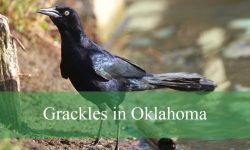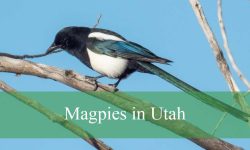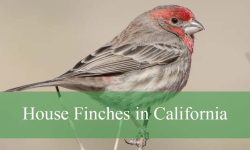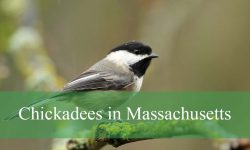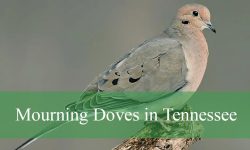Egrets have become one of the most recognizable birds in the South Carolina marshes. Their long legs, snowy plumage, and elegant posture capture attention instantly. Many people see them gliding above tidal creeks or standing motionless among reeds without realizing how much complexity lies behind their quiet presence.
South Carolina’s network of salt marshes, estuaries, tidal rivers, and shallow inlets provides one of the richest habitats for egrets on the East Coast. These wetlands support abundant fish, crustaceans, and insects which allow several egret species to thrive year round. The state’s warm climate and expansive coastline make it a natural stronghold for these striking birds.
This article uncovers hidden facts about egrets living in South Carolina’s marshes. Their feeding strategies, nesting habits, seasonal behaviors, and ecological roles reveal a bird more intricate and adaptive than most observers ever notice.
Understanding Egrets in South Carolina
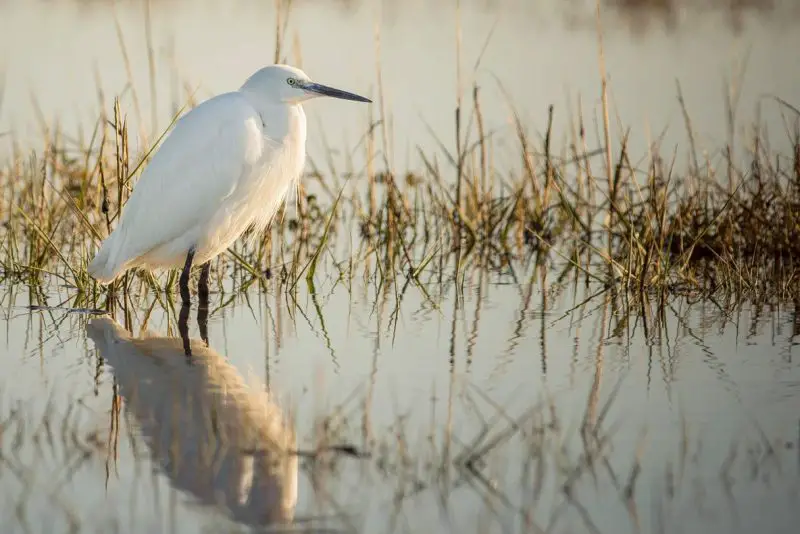
The Species That Live Here
Several egret species inhabit the marshes including the great egret, snowy egret, cattle egret, and reddish egret. Each species displays unique traits.
Great egrets are tall with long yellow bills and slow, powerful strides. Snowy egrets are smaller and more agile with black bills and distinctive yellow feet that flash brightly as they move. Cattle egrets wander through fields and marsh edges often following livestock or tractors. Reddish egrets, less common but extremely charismatic, perform energetic dances across shallow water.
Together these species form a dynamic presence throughout the marshlands.
Why the Marshes Support So Many Egrets
The South Carolina coast offers a mosaic of salt marshes, estuarine creeks, oyster reefs, and tidal ponds. These environments produce an abundance of fish, shrimp, crabs, and insects that egrets rely on.
Tides carry nutrients that feed small prey animals. Mudflats exposed during low tide reveal hunting grounds. Thick stands of spartina grass provide shelter and foraging corridors. The environment changes constantly which creates endless opportunities for egrets throughout the year.
Where Egrets Spend Their Time
Egrets frequent shallow creeks, flooded grasslands, tidal pools, and the edges of marsh islands. During low tide they often walk along exposed mudflats in search of prey. During high tide they retreat to higher ground or forage in newly submerged areas.
Their movements trace invisible patterns across the marsh depending on water level, sunlight, wind, and season.
Hidden Behaviors Few People Notice
Silent Stillness With Purpose
Many observers assume egrets stand silently without reason. In reality their stillness is a hunting strategy. Remaining motionless allows prey to wander near. Muscles stay relaxed yet ready for the precise moment of a strike.
This blend of patience and quick reaction defines their hunting success.
Subtle Body Language
Egrets communicate with small gestures. A slight tilt of the head reveals focus on underwater movement. A lifted wing creates shade that attracts fish. A raised crest signals alertness or mild irritation toward neighboring birds.
Their body language is refined and deeply attuned to marsh rhythms.
Tidal Awareness
Egrets understand tides with remarkable precision. They appear at certain creeks minutes before the tide exposes feeding grounds. They move inland when tides push water into grass beds.
This awareness reflects generations of instinct shaped by South Carolina’s coastal system.
Anatomy Designed for the Marsh
Long Legs for Shallow Waters
Their tall legs allow effortless movement across mudflats. Each step is deliberate to avoid sinking or disturbing sediment. The spacing of their toes helps distribute weight on soft ground.
Sharp, Dagger-Like Bills
Their straight pointed bills function as tools for spearing fish or grabbing quick-moving prey. The bill’s shape varies slightly between species which influences hunting techniques.
Flexible Necks
The long egret neck coils like a spring. Muscles allow sudden extension that delivers lightning-fast strikes. This flexibility is essential for catching prey in murky water.
Feeding Habits in South Carolina Marshes
The Spear Strike
Great egrets often spear fish with a precise downward thrust. Their motion is fast but controlled. Once captured, prey is flipped and swallowed whole.
The Foot Stirring Technique
Snowy egrets use their bright yellow feet to stir mud or tap lightly on underwater surfaces. This action flushes out prey. Their agile movements create a mesmerizing display across tidal pools.
Active Dancing
Reddish egrets perform some of the most dramatic hunting behaviors in the bird world. They chase fish in erratic circles spreading their wings to cast shadows that confuse prey.
Diet Diversity
Egrets consume fish, shrimp, fiddler crabs, small amphibians, marine worms, and aquatic insects. Their diet shifts based on tide, temperature, season, and prey availability.
Life Inside the Nesting Colonies
Nesting Sites
Egrets often form colonies in islands of trees or dense shrubs surrounded by marsh water. These rookeries may contain hundreds of nests built on branches or vegetation platforms.
Colonies provide protection through numbers. The noise, activity, and movement deter some predators.
Courtship Displays
Courtship includes elegant poses. Great egrets raise lacy plumes. Snowy egrets fluff their feathers and bow gracefully. Males bring sticks to females. Females choose partners based on display quality and nest-building effort.
Egg Laying and Raising Young
Females lay several pale blue eggs. Both parents take turns incubating. Hatchlings grow rapidly on a diet of regurgitated fish. Competition between chicks can be intense and only the strongest survive in years of limited food.
Departure From the Colony
By midsummer chicks grow strong and begin exploring branches. Eventually they take their first awkward flights toward open marshes. Their earliest hunts occur along safe shallow edges.
Seasonal Rhythms of Egrets in South Carolina
Spring Arrival and Nesting
Great egrets and snowy egrets grow elaborate breeding plumes. Rookeries become noisy and bustling. Marshes fill with adults carrying sticks, fish, and marsh grasses.
This is the most intense season of activity.
Summer Abundance
Young egrets learn to hunt during summer. Marshes teem with small fish and shrimp. Warm waters accelerate prey growth which supports expanding egret populations.
Fall Dispersal
As autumn cools the marshes, some egrets remain year round while others move southward. Food availability influences their decisions more than temperature.
Winter Quiet
Winter brings a calmer marsh. Resident egrets feed along tidal creeks that remain ice free. They follow sunlit areas where fish activity increases slightly during warm spells.
Ecological Importance of Egrets
Controlling Prey Populations
Egrets regulate fish, crab, and insect numbers. Their predation influences how prey species distribute themselves across marsh zones.
Supporting Marsh Food Webs
Their discarded prey pieces enrich nutrient cycles. Their presence affects predator behavior. Their movements influence how smaller birds use feeding spaces.
Indicators of Wetland Health
Egrets thrive in clean, well-functioning marshes. When their numbers rise or decline it reflects changes in prey abundance, water quality, and habitat stability.
Egrets Across Different Marsh Habitats
Tidal Creeks
In narrow creeks egrets follow moving fish. They walk slowly along water edges or perch on exposed roots.
Mudflats
During low tide mudflats reveal shrimp and crabs. Egrets space themselves evenly across these areas to reduce competition.
Spartina Grass Fields
Flooded grass beds attract prey hiding among roots. Egrets step gently into these areas to avoid startling movement.
Oyster Reef Edges
Oyster reefs form natural hunting boundaries. Fish and small crustaceans hide among shells. Egrets position themselves where tidal currents move prey outward.
Social Interactions Among Egrets
Spacing Rules
Although they feed near one another egrets maintain personal distance. A slight wing spread communicates boundaries. A quick jab of the bill warns others not to approach.
Mixed Species Foraging
Snowy egrets, great egrets, and herons sometimes feed together. Each species uses different strategies which reduces direct competition.
Colony Dynamics
Inside nesting colonies communication becomes more complex. Calls, gestures, and posture help adults locate mates and defend nest sites.
Interactions With Other Marsh Wildlife
With Herons
Egrets often share habitat with great blue herons and tricolored herons. Herons tend to dominate feeding sites but coexistence remains stable because each bird uses different hunting zones.
With Fish
Small fish react quickly to egret shadows. Their evasive patterns shape how egrets move and where they strike.
With Crabs
Fiddler crabs retreat to burrows at the slightest vibration. Egrets often wait quietly for crabs to reemerge before striking.
With Raptors
Ospreys and hawks soar above marshes. Their presence influences when and where egrets feed or rest.
The Daily Life of an Egret in the Marsh
Sunrise Movements
At dawn egrets disperse from nighttime roosts. The tide at sunrise determines whether they head toward mudflats or flooded grass.
Midmorning Foraging
As marsh temperatures rise prey becomes active. Egrets move efficiently between feeding spots. Each bird selects areas based on experience and observation.
Afternoon Rest
During hotter hours egrets perch quietly on tree limbs or tall marsh vegetation. They conserve energy and groom their feathers.
Evening Feeding
Low tide in late afternoon often brings excellent fishing. Egrets spread across creeks and shallow pools to feed one last time before dusk.
Myths and Misconceptions About Egrets
Myth: Egrets Only Live Near Saltwater
They occur in freshwater wetlands, lakes, fields, and any shallow-water habitat.
Myth: All Egrets Act the Same
Each species has distinct feeding and nesting styles.
Myth: Egrets Eat Only Fish
They consume crustaceans, insects, amphibians, and occasional small reptiles.
Conservation and the Future of Egrets in South Carolina
Marsh Preservation
Salt marsh protection ensures egret populations remain stable. Healthy marshes produce abundant prey and safe nesting sites.
Rookery Stability
Many rookeries remain active for decades. Protecting these locations preserves entire generations of birds.
Coastal Resilience
Changing tides and shifting shorelines influence habitat quality. Conservation efforts help maintain the marsh’s ecological structure.
FAQs About Egrets in South Carolina Marshes
Are egrets common in South Carolina
Yes. They occur year round in most coastal regions.
What do egrets eat
They eat fish, shrimp, crabs, insects, and other small marsh animals.
Where do egrets nest
They nest in colonies in shrubs or trees on marsh islands.
Why are egrets white
Their coloration aids visibility during courtship and may help reflect heat.
Do egrets migrate
Some migrate while others remain resident depending on food availability.
How do young egrets learn to hunt
They observe adults then practice in shallow waters.
Are egret colonies noisy
During nesting season colonies become very active and vocal.
How long do egrets live
Many live more than a decade in the wild.
Conclusion
Egrets in South Carolina marshes are far more than elegant silhouettes scattered across tidal creeks. They are skilled hunters, attentive parents, and essential contributors to marsh ecosystems. Their every movement reflects an ancient relationship with the tides, vegetation, and wildlife of the Lowcountry.
Understanding their hidden behaviors reveals the intricate balance that defines coastal life. Whether standing still on a mudflat or gliding quietly across the marsh, egrets embody the natural rhythm of South Carolina’s wetlands. Their presence enriches the landscape and reminds observers of the quiet complexity found in every corner of the marsh.

